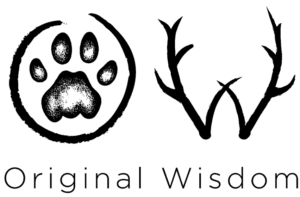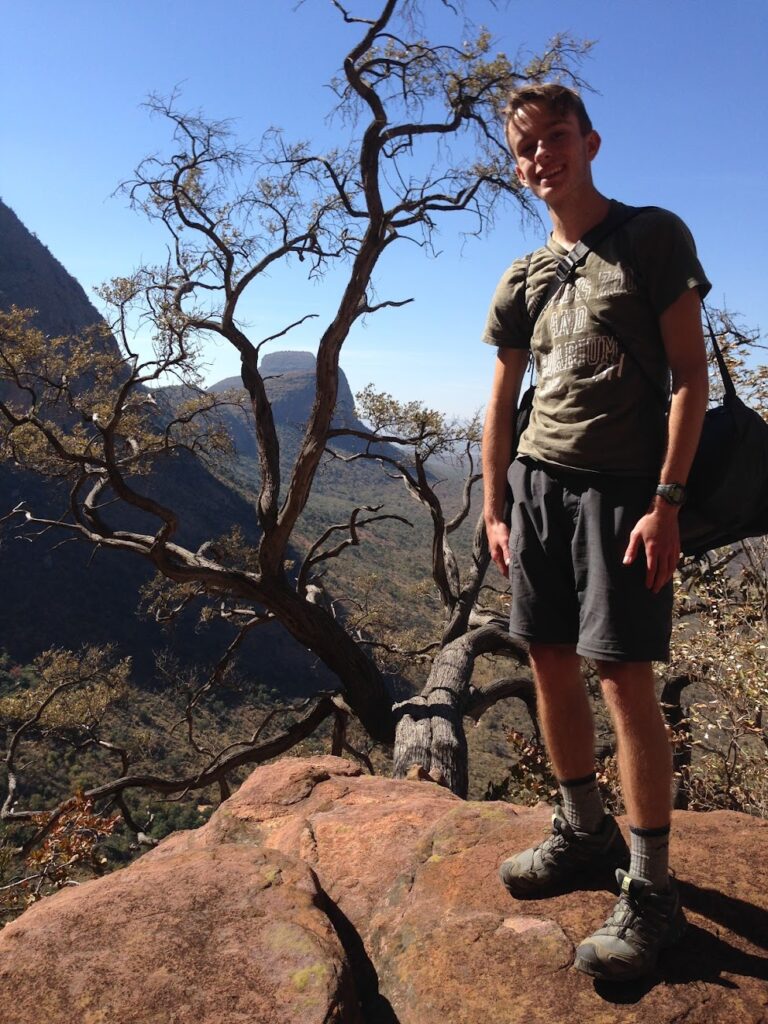The following blog post is created by a Hopkinton/Bow High School student from New Hampshire, who is on program with Original Wisdom, partnering with Nature Guide Training, on a 3-week South African Ecology & Culture program at Djuma Game reserve in the Sabi Sands region of the Greater Kruger Area (July 2015). In addition to exposure to ecology and culture, we have sponsored a local South African student on scholarship for the entire program (see Blog 3# Interview with Mhlavasi) and will attend 2 days at Mhlavasi’s school, Acorns to Oaks, where our students interact with the local students and help to teach them some basic skills in spatial thinking and use of Geographic Information Systems (GIS) to create online maps and stories with a spatial component. Our overall goals include facilitating connections with self, others, and the natural world.
Michelle Neal
July 11th, 2015
Day 10
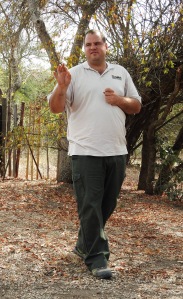
 A special and multi-talented guest has arrived at camp! Jens Reissig wears many hats: reptile-handling specialist and published author, paramedic and first-aid instructor, and the tallest man in the Sabi Sands. The staff members jokingly call him their “little, German friend.” Our jolly, 6’6” friend has introduced a couple exciting events to us. First, snake handling, and now we are en route to being First Aid certified for the African bush! While this may not seem important to some, we have heard stories of previous groups being able to tend to their peers following this course after receiving small injuries such as lacerations that required further stitching by a doctor (he stepped on a piece if glass in a cave in the Waterberg), and, hey, any knowledge is good knowledge.
A special and multi-talented guest has arrived at camp! Jens Reissig wears many hats: reptile-handling specialist and published author, paramedic and first-aid instructor, and the tallest man in the Sabi Sands. The staff members jokingly call him their “little, German friend.” Our jolly, 6’6” friend has introduced a couple exciting events to us. First, snake handling, and now we are en route to being First Aid certified for the African bush! While this may not seem important to some, we have heard stories of previous groups being able to tend to their peers following this course after receiving small injuries such as lacerations that required further stitching by a doctor (he stepped on a piece if glass in a cave in the Waterberg), and, hey, any knowledge is good knowledge.
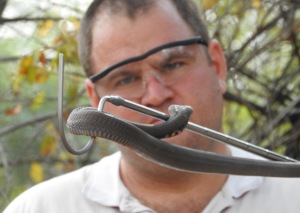
The first-aid process has been amusing, to say the least. Jens initiated our training with an actual “hands-on” snake handling class (complete with venomous snakes) followed by a series of engaging lectures on traumatic injuries. He then covered (in often gruesome detail) snakebites, amputations, open wounds, various common medical conditions, burns, fractures, shock, CPR, use of an AED, and more. Although it’s often amusing to act out and treat these false injuries and illnesses, but it’s equally important. South Africa is an extreme and foreign environment for us New Hampshireites – and proper preparation is essential. First Aid can save lives no matter where we may be. Needless to say, he’s prepared us for the worst scenarios and we are ready to make the best of it.
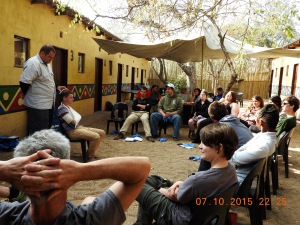
However, Little Anne CPR dolls and PowerPoints will not fully prepare us for a real-life scenario. Jens knows this very well. “It’s time to put things into perspective,” he said with a mischievous smirk. We would be performing a realistic simulation using two group members as “victims.” Declan generously donated a pair of pants to be destroyed during the test (they were too small and therefore useless to him). Who’s to wear the pants and be the victim you wonder? Well, as they say, a journalist must always get as close to the action as possible…and I couldn’t get much closer than this. Mr. Duhaime, Marcel, volunteered to be the other “victim.”
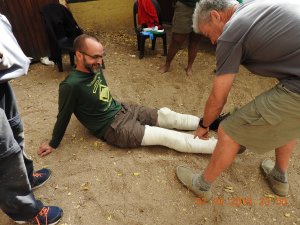
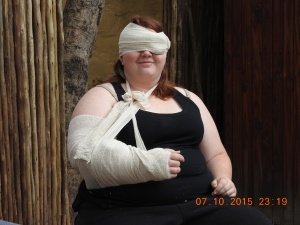
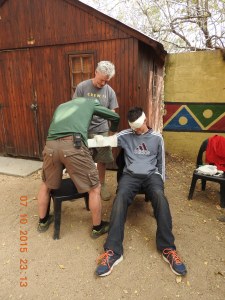
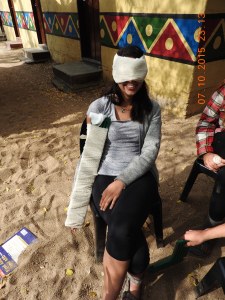

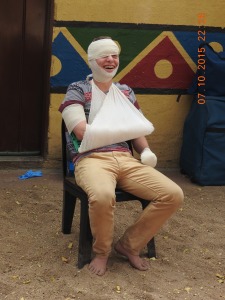
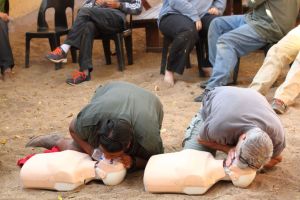
Jens, Drew, Marcel, Diana, Lee, and myself hopped into a vehicle and drove about a half kilometer away from camp. Jens dressed me with a mock open fracture made out of rubber on my calf, a fake open wound on my hand, and corn syrup blood splattered about my face. Not my greatest look. A rhino, as the story was told, chased me up a tree and I fell out of the tree and landed on my back upon a large branch. Marcel, the second lucky victim, witnessed my fall and ran to my aid. Before he could reach me, however, he tripped on a ditch, sprained is ankle, and cut his forearm badly. Marcel and I received instructions to play our best “wounded person,” falling in and out of consciousness, delirium, aggressiveness, and shock. It would be a real test of what the group had learned.
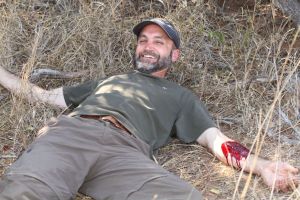
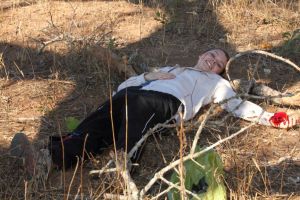
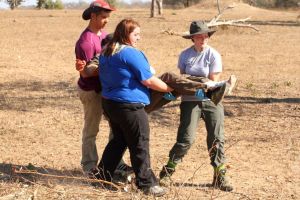
Jens filmed the whole production. Students, feeling very much like it was the real deal, divided themselves into groups and set to work using their new First Aid education. They bandaged, wrapped, secured, and comforted me. I was loaded onto a medical backboard and carried back to camp; an experience that felt very similar to riding a horse. Delaney and Sadie led the two groups while Madeline called for help and kept records of our conditions. Marcel and my acting apparently captured the audience sufficiently, as seen when Carmen said, “I didn’t fully realize that it was fake until we were back at camp.”
The realistic intensity of the simulation was “unlike any other First Aid training” and “we are incredibly lucky to have experienced this,” Mr. Duhaime expressed. Later that evening Jens reviewed the video with us and critiqued our responses, explaining that we did “very well” despite a fair amount of small mistakes. We felt fully prepared for our final certification exam that we expected to take that night. Jens, with the same mischievous smirk that he wears so often, asked if we were ready. “Yes!” we shouted. “You’re sure?” he questioned. “Yes!” we responded. “Alright, then here’s your exam,” he paused. “Good evening!”
No exam? That’s it? Jens, so sly with his teaching, tricked us all into listening extra closely by promising an exam that didn’t exist! What a great surprise to an even better First Aid course. Now all of you at home can feel extra safe with your trained and certified child, friend, or loved one!
____________________________________________
Two days with only First Aid instruction would have been traumatic to us, sitting in the middle of the Sabi Sands listening to leopards and lions calling, and elephants breaking branches while feeding, so every evening we took a break and went on game drive! In one of these drives, we witnessed our first “feeding” sighting. Although these moments can be sad, gruesome, and rather smelly because something has to die in order for something else to live, we were excited to see it, nonetheless. We found the Nkuhuma lion pride feeding happily upon a Cape buffalo carcass. The previous night, the pride had successfully hunted their prey. All that remained by the time we arrived was some of the legs and back, and bones. The majority of the cats already consumed their portions and now lay upon the grass, panting heavily as they digested their food with round, swollen tummies. A female ferociously climbed into the carcass while another focused on the hip. Not long after, a young adult male intruded for his own dining pleasure. He yanked, he grumbled, he tore at the meal, presenting the power of his muscular structure for any who would watch. And we did watch, in speechless awe. It was a brilliant and eye-opening representation of the science of survival and the circle of life. These are the lessons we travelled halfway across the planet for. This is why we are in South Africa.
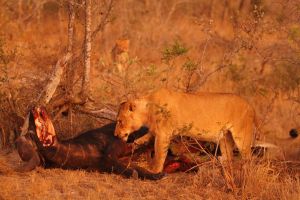
Edited by Kersey Lawrence
